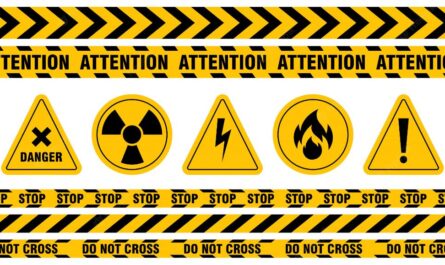There are currently over 7 billion people on the planet, and tens of millions are born and die every year. Each of us leaves behind traces of our existence in the air, water, soil, and even space, but these traces won’t last forever. Our structures will be demolished in a few hundred years, and stone monuments, plastic toys, and even signs of our inevitable nuclear destruction will eventually vanish. How can we be certain that we were the first highly developed civilization on the planet? Are we the first civilization on Earth?
It’s difficult for us to conceive a time when we as people won’t be here, and it’s even more difficult to envision a time when our society won’t exist at all, but if we learned anything from archaeology, it’s that every civilization has its time. Consider ancient Egypt, which had 30 dynasties over a period of three thousand years, and how, if you were an Egyptian living during this period, generations of your family dating back as long as anybody can remember traveled As far as anybody can recall, your civilization was there and would last forever before it vanished. The Mesopotamians walked in the shadow of the pyramids, fished the Nile, and sailed the Mediterranean, mixing with different cultures.
If you’re interested in space travel, look at this article – https://mayathevoice.com/2027-will-see-the-opening-of-the-first-space-hotel/
All of these civilizations, including our own modern ones, have only been around for a short period of time. Complex life has existed for hundreds of millions of years, and modern humans have only been around for about 100 000 years. Before them, the Indus, after them, the Greeks, Nubians, the Persians, the Romans, the Incas, and the Aztecs were empires of millions of people that lasted a thousand years or more. However, very little evidence of them remains today. There is a lot of time in the past and lots of room for other intelligent species to arise, thrive, and fall extinct over and over again with other species because our whole history has only occurred in the last 0.002 percent of life on earth.
We’re used to thinking that we learn about ancient societies by looking at artifacts and excavated ruins, but this really only works if you’re going back a few thousand years. When you want to go back millions of years, it’s more complicated. For instance, the earth is about 4.5 billion years old. If that happened, would we really know they were here? Adam Frank and Gavin Schmidt addressed this issue when they wrote The Silurian Hypothesis.
Because of the earth’s plate tectonics, ancient civilizations that predate humans may have been extremely difficult to find. Mountains today are yesterday’s ocean floor, and new land is created every day as old land is destroyed into dust. For an organism to become fossilized, certain requirements must be present. The organism needs hard body parts like bones, teeth, and shells. It requires strong pressure for the mineralization and low oxygen to prevent decomposition for the remains to be swiftly buried and shielded from scavenging and erosion, but this practically never occurs. During the 180 million years that dinosaurs were on the planet, trillions of different species lived there.
They come to the conclusion that direct evidence like this can only go back about 4 million years even if the entire human race were eliminated by a nuclear war the radioactive evidence would eventually disappear because the area of urbanization is less than one percent of the earth’s surface. Therefore, human artifacts like road cities machines even mega structures would last only a few thousand years and are unlikely to ever be found.
For instance, because we are producing so much food, our usage of fertilizer is really rerouting the nitrogen supply of the globe. This nitrogen cycle is also altering its isotopic signature, and this isotope will be seen in the sediment. The element that will really tell the story of civilization is carbon. Humans conquered the planet by harnessing combustion, so it seems reasonable that intelligent life for the most part evolved through combustion. Agriculture and deforestation increase soil erosion, and that erosion washes into the sea and becomes part of the sediment. Human mining activities have increased the amounts of gold, lead, chromium, platinum, and other metals, and these will also be visible in the sediment at greater rates than before.
Burning the remains of long-dead plants, such as fossil fuels, alters the ratio of isotopes in the atmosphere and is known as the Seuss effect. This is also known as the Green Omelet Guy Difference. Although there are 15 different varieties of carbon, the most prevalent isotopes are carbon 12, carbon 13, and carbon 14.
Animals that eat plants consume the carbon-12 from the plants, and animals eat animals that eat plants consume their carbon-12, and so on. Volcanic emissions are now carbon-13; carbon-14 is radioactive and decays predictably over time; fossil fuels have no carbon-14 at all; and as we burn more fossil fuels, the amount of carbon-14 in the atmosphere decreases.
If we look through sedimentary layers from millions of years ago, this is what we need to see to determine if there was an advanced civilization; otherwise, global warming is a myth and it’s not true. fossil fuels cause the levels of carbon 13 and 14 to decrease while the level of enriched carbon 12 increases. all this carbon in the atmosphere also causes the earth to warm slightly.
Even the authors of the silurian hypothesis acknowledge that if you’re not specifically looking at the right time in history and for the right details you’ll probably miss it, but the silurian hypothesis does give us an interesting set of tools that might not help us find ancient civilizations on our planet. Scientists believe that we are the first civilization, but they do admit that if an advanced species only existed for as long as we have they would be really hard to detect. The drake equation, which essentially counts the number of stars with planets, is a well-known method for calculating the number of extraterrestrial civilizations in our galaxy.
Our civilization may be the only one in the cosmos, yet there are old civilizations on Earth for humans. They raise the intriguing idea that there may be millions of other civilizations out there and that we now have the means to discover them.




